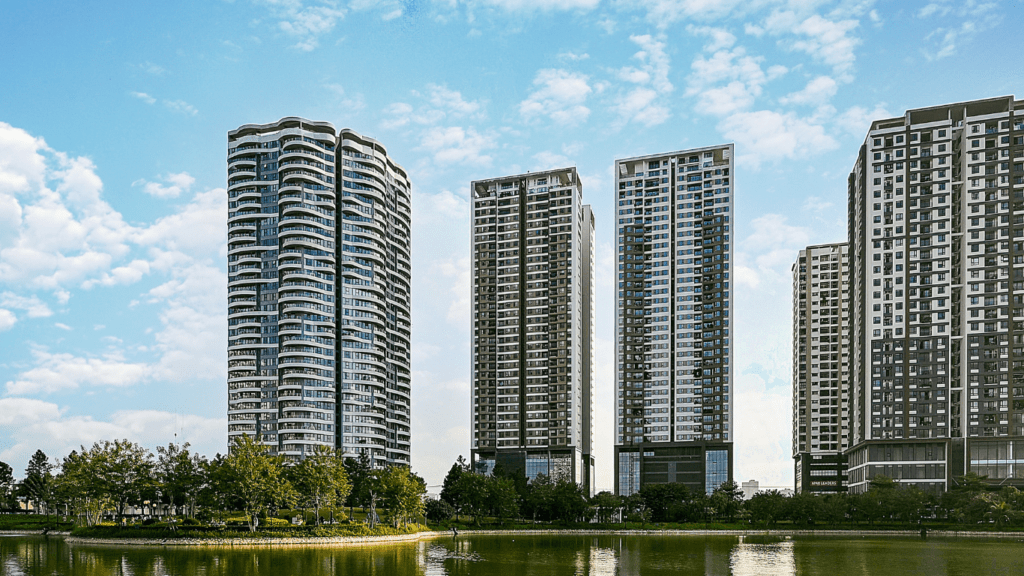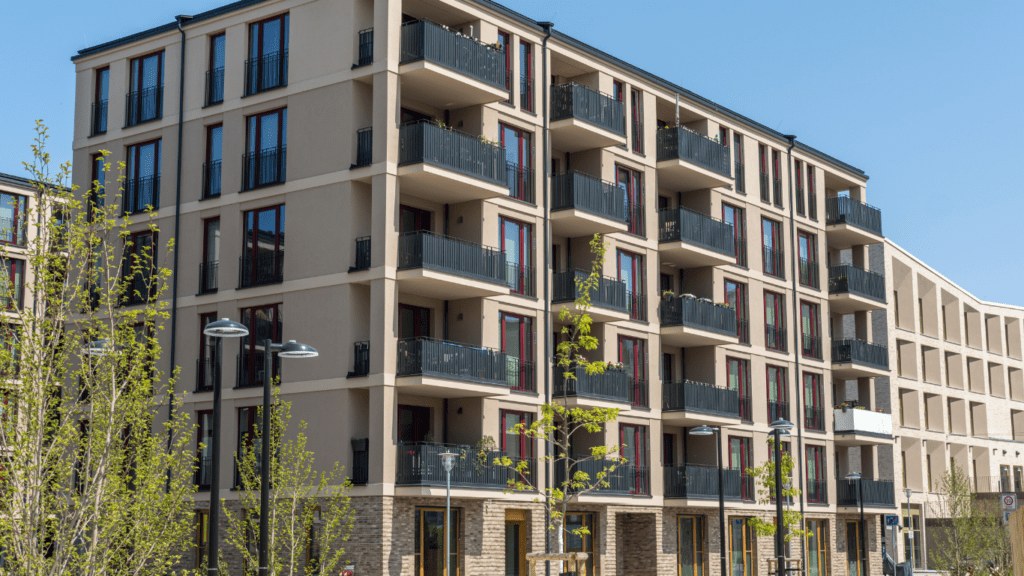Living in a high-demand city comes with its own set of challenges, especially when it comes to finding suitable rental accommodations. As someone who has witnessed the ever-evolving landscape of the rental market in bustling urban centers, I’ve seen firsthand how trends and demands shift over time.
In this article, I’ll delve into the dynamic changes shaping the rental market in high-demand cities and explore the factors driving these transformations. From the rise of co-living spaces to the impact of remote work on rental preferences, the rental market is undergoing a significant metamorphosis.
As a seasoned observer of real estate trends, I’ll share insights into how landlords, tenants, and property managers are adapting to meet the evolving needs of city dwellers. Join me as we uncover the latest developments and innovations influencing the rental market in high-demand cities.
Factors Driving Changes in High-Demand Cities
Expanding metropolitan areas are witnessing shifts in rental preferences, driven by various factors that shape the rental market landscape. As a seasoned property analyst, I’ll delve into the key drivers bringing about changes in high-demand cities, shedding light on the forces steering this evolution.
- Growing Urbanization: Urbanization trends are propelling the demand for rental properties in major cities. With more people flocking to urban centers for better job opportunities and lifestyle amenities, the need for rental accommodations is on the rise. The influx of individuals seeking urban living experiences is reshaping rental dynamics.
- Tech Industry Influence: The tech industry’s footprint in high-demand cities is a significant catalyst for transforming the rental market. Tech hubs attract professionals looking to reside closer to their workplaces, leading to increased demand for rental units. As technology continues to drive economic growth in these cities, the rental landscape adapts to accommodate the evolving workforce.
- Changing Work Patterns: Flexibility in work arrangements, accelerated by the rise of remote work, is redefining rental preferences. Tenants now prioritize living spaces that cater to remote work needs, such as dedicated home offices or reliable high-speed internet access. The shift towards remote work is influencing the design and amenities offered by rental properties.
- Innovative Co-Living Concepts: The emergence of innovative co-living concepts is revolutionizing the rental market in high-demand cities. Shared living spaces with communal facilities and flexible leasing options appeal to a younger demographic seeking affordability and a sense of community. Co-living arrangements offer a unique solution to urban housing challenges.
- Sustainability and Eco-Friendly Practices: The increasing emphasis on sustainability and eco-friendly practices is shaping rental trends in high-demand cities. Tenants are gravitating towards properties that prioritize energy efficiency, green spaces, and sustainable construction materials. Landlords are incorporating sustainable features to attract environmentally-conscious renters.
These factors underscore the dynamic nature of the rental market in high-demand cities, highlighting the interplay between urbanization, technological advancements, changing work patterns, innovative housing concepts, and sustainability considerations.
Understanding these driving forces is essential for stakeholders in the real estate industry to navigate the evolving landscape and cater to the evolving needs of tenants in urban environments.
Technology’s Impact on Rental Market Trends
Technology plays a pivotal role in shaping current trends in the rental market, optimizing the process for both landlords and tenants.
Online Rental Platforms
Online rental platforms have revolutionized how individuals search for and secure rental accommodations. Sites like Zillow and Apartments.com offer a vast array of listings with detailed information, virtual tours, and reviews, streamlining the rental search process.
These platforms enable tenants to explore multiple properties from the comfort of their homes, saving time and providing a more comprehensive view of available options. Additionally, online platforms often incorporate features like filters for specific amenities, neighborhood preferences, and budget constraints, allowing users to customize their search criteria efficiently.
Smart Home Features
The integration of smart home features in rental properties has become increasingly prevalent, catering to the tech-savvy preferences of modern tenants. Smart thermostats, keyless entry systems, and remote-controlled lighting not only enhance the convenience and security of rental units but also appeal to tenants looking for a tech-forward living experience.
These features offer added convenience, allowing tenants to remotely manage various aspects of their homes, such as temperature settings or security systems, using their smartphones or voice commands. Landlords who incorporate smart home technology differentiate their properties in a competitive market and cater to the demand for integrated tech solutions among renters.
Changing Demographics and their Influence
Reflecting on the evolving dynamics of the rental market in high-demand cities, I delve into the impact of changing demographics on this shifting landscape.
- Increased Urbanization: Urban centers are experiencing a surge in population as more individuals flock to cities in search of job opportunities and modern amenities. The rising urbanization trend intensifies the demand for rental properties, emphasizing the need for innovative solutions to address housing shortages.
- Tech Industry Influence: Tech hubs have become magnets for professionals who prefer living in proximity to their workplace, reshaping rental preferences. This influx of tech-savvy individuals impacts rental trends, driving the need for properties that cater to their lifestyle choices.=
- Shift in Work Patterns: The prevalence of remote work has redefined tenant preferences, with a growing inclination towards living spaces that accommodate home offices and reliable internet connectivity. Flexibility in work arrangements has led to a surge in demand for rentals offering amenities conducive to remote work environments.
- Demographic Trends Impacting Sustainability: Younger demographics show a preference for eco-friendly and sustainable living spaces, prompting landlords to prioritize energy-efficient properties with green features. Sustainability has become a key consideration for tenants, driving a shift towards environmentally conscious rental choices.
- Community-Oriented Living Concepts: Innovative co-living arrangements are gaining popularity among younger demographics seeking both affordability and a sense of community. The emergence of communal living spaces caters to the social preferences of tenants, offering a unique housing solution in high-demand urban areas.
As the rental market continues to evolve in response to changing demographics, stakeholders in the real estate industry must adapt to meet the evolving needs and preferences of tenants in high-demand cities.
Regulatory Changes Affecting the Rental Market
Exploring the rental landscape in high-demand cities reveals a dynamic interplay between regulatory changes and market trends. These changes play a crucial role in shaping the rental market ecosystem, impacting both landlords and tenants alike.
Here, I delve into the regulatory shifts influencing the rental market in these urban hubs.
- Rent Control Policies: In response to escalating rental prices, some high-demand cities have implemented rent control policies to protect tenants from exorbitant increases. For instance, cities like San Francisco and New York have established regulations capping the maximum rent a landlord can charge, providing stability for tenants in a volatile market.
- Eviction Moratoriums: The COVID-19 pandemic prompted the introduction of eviction moratoriums in many cities, offering temporary relief to tenants facing financial hardships. These regulations temporarily halted eviction proceedings, ensuring housing security for vulnerable populations during challenging times.
- Tenant Protection Laws: Cities are increasingly enacting tenant protection laws to safeguard renters’ rights and improve living conditions. These laws outline standards for habitability, lease agreements, and eviction procedures, enhancing transparency and fairness in landlord-tenant relationships.
- Zoning Regulations: Zoning regulations dictate how properties can be used within a specific area, influencing the types of rental units available. Changes in zoning laws can impact property development, density, and affordability, shaping the overall rental market landscape.
- Short-Term Rental Regulations: The rise of platforms like Airbnb has led to the implementation of short-term rental regulations in many cities. These regulations aim to balance the economic benefits of short-term rentals with concerns about housing availability, neighborhood disruption, and rental affordability.
Understanding these regulatory changes is essential for navigating the evolving rental market in high-demand cities. By staying informed about local regulations and policy updates, both landlords and tenants can adapt to a shifting regulatory environment and make informed decisions in the competitive urban rental market.



